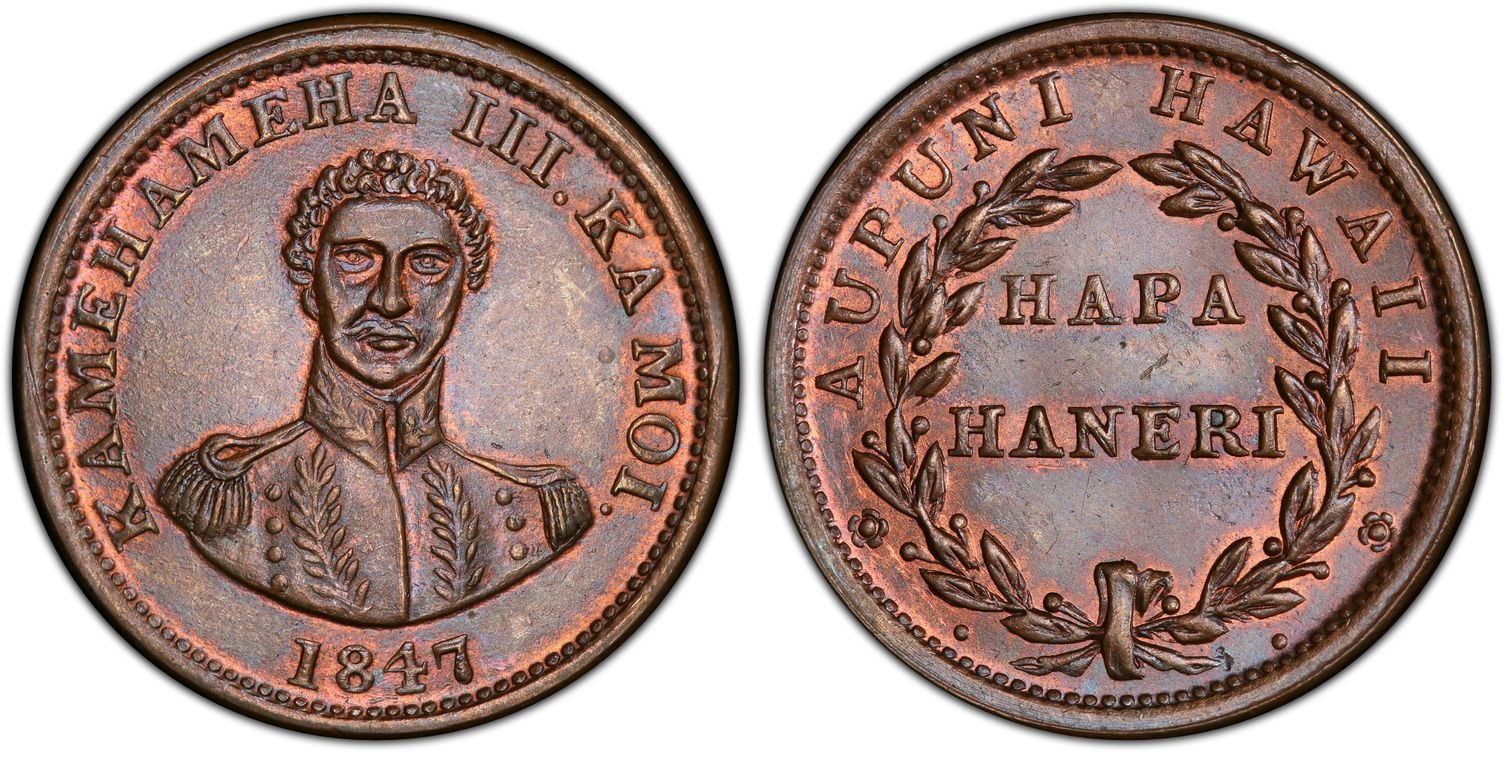
Hapa Haneri Souvenir
By: Gil Kissling
The Flying Eagle Cent was the first ever small cent and was minted from 1856-1858. It was designed by James B. Longacre, the fourth Chief Engraver of the United States Mint. This is a very exciting series to collect because of its rich history, amazing varieties, and beautiful design. There are so many things to know about this series, making it a fun challenge to collect.
A few weeks ago, I went to the Cabool Mo coin shop, and I ran into something I did not expect to see. Normally when I go, I end up digging through bargain bins and foreign coin bins and occasional token bins. So basically, all the cheap stuff. And lately I have been producing some pretty interesting finds, including a bunch of foreign junk silver that I use to fill out some of my foreign type sets.
On this specific day, I dug through the box as usual and my brother, who also likes to collect, found a coin that looked very familiar to me. He didn’t care about it but I couldn’t shake the feeling that it was significant.
I looked up the coin when we got back home and it seemed to be an 1847 1 Cent Hawaii coin. I considered this to be my best find ever because of its historicity and value, which I found to be around 500 dollars – a fairly substantial amount for me.
The coin in question is one of 100,000 that were made by King Kamehameha III, the ruler of the Hawaiian Islands from 1825-1854. He had them made because of his newly established monetary system. The Keneta, which was its originally intended name, was to be the equivalent of the United States Large Cent. In fact, it was minted in San Francisco, California, although privately. They were designed and engraved by Edward Hulseman in 1847.
Hulseman made an error on the Hawaiian coin’s reverse, misspelling the denomination as “Hapa Haneri” which was supposed to say “Hapa Hanele” which means “One Cent.” The obverse of the coin features the illustrious King Kamehameha III, whose name and title are shown on the obverse in Latin. The reverse of the coin contains several legends which include the denomination and the nation’s mark “The Government of Hawaii.” Both of these are in Latin.
Although the coin and the other denominations of the series were a disappointment to many Hawaiians, the Keneta were legal tender in Hawaii until 1904 when Hawaii became a US state, but they circulated for a little longer than that. On May 20, 1953, in an issue of Numismatic Scrapbook Magazine, Melvin Came offered to sell his hoard of 1 Cent Hawaii coins for three to five dollars per coin, depending on condition. Since 1953, these coins have only gained value because all but 12,000 of them were melted.
After researching all of this I began to wonder whether my coin was authentic or not, so I compared it to another coin I found online and discovered that mine was not actually the real deal. I was actually not super disappointed because of the low price I bought it for. The key difference between an authentic coin and a replica are the words “Souvenir Alii of Hawaii” on the bottom reverse of the coin.
The replica is worth around a dollar in Uncirculated condition, which is not much. However, if I could sell it for that much I would make 300 percent of the cost. The coin was made for tourists and has been distributed to many collectors. The point of the inscription on the obverse is so no one thinks it’s legitimate. However, since I am not an extremely experienced collector I missed it. Next time I see a tricky token I will look a little more carefully for the key design flaws that indicate its illegitimacy.


“1847 1 Cent Hawaii, BN (Regular Strike)” https://www.pcgs.com/coinfacts/coin/1847-1c-hawaii-bn/10965